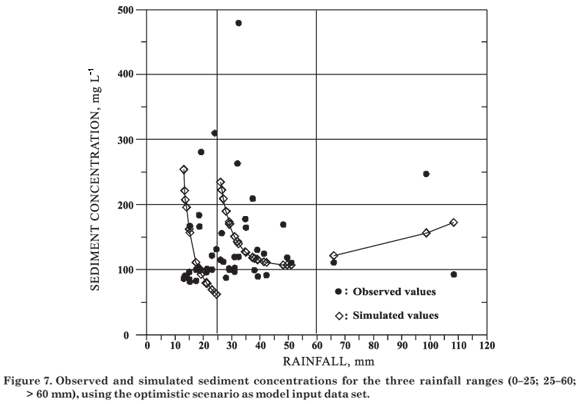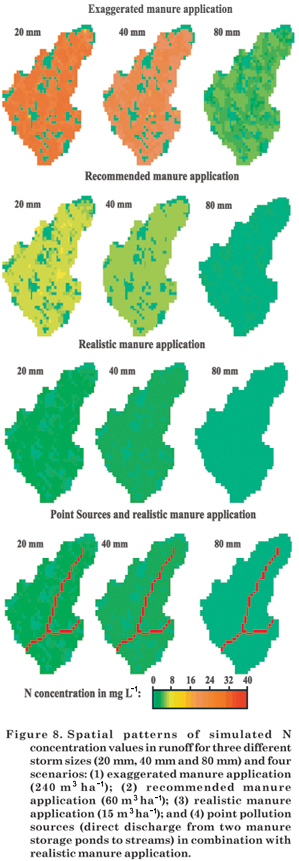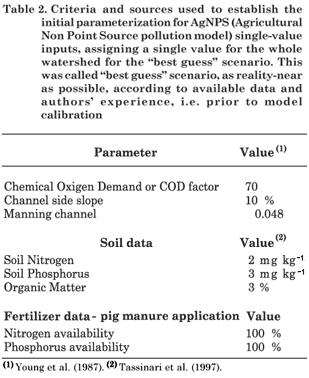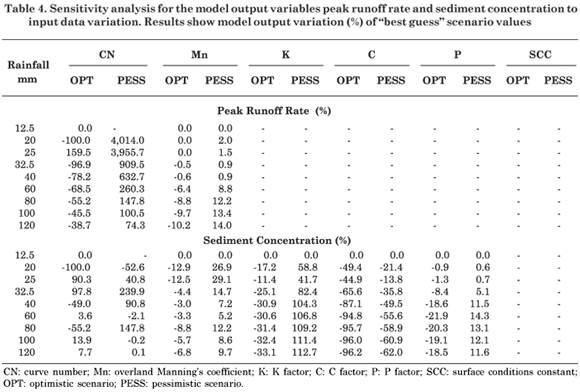Intensification of agricultural production without a sound management and regulations can lead to severe environmental problems, as in Western Santa Catarina State, Brazil, where intensive swine production has caused large accumulations of manure and consequently water pollution. Natural resource scientists are asked by decision-makers for advice on management and regulatory decisions. Distributed environmental models are useful tools, since they can be used to explore consequences of various management practices. However, in many areas of the world, quantitative data for model calibration and validation are lacking. The data-intensive distributed environmental model AgNPS was applied in a data-poor environment, the upper catchment (2,520 ha) of the Ariranhazinho River, near the city of Seara, in Santa Catarina State. Steps included data preparation, cell size selection, sensitivity analysis, model calibration and application to different management scenarios. The model was calibrated based on a best guess for model parameters and on a pragmatic sensitivity analysis. The parameters were adjusted to match model outputs (runoff volume, peak runoff rate and sediment concentration) closely with the sparse observed data. A modelling grid cell resolution of 150 m adduced appropriate and computer-fit results. The rainfall runoff response of the AgNPS model was calibrated using three separate rainfall ranges (< 25, 25-60, > 60 mm). Predicted sediment concentrations were consistently six to ten times higher than observed, probably due to sediment trapping along vegetated channel banks. Predicted N and P concentrations in stream water ranged from just below to well above regulatory norms. Expert knowledge of the area, in addition to experience reported in the literature, was able to compensate in part for limited calibration data. Several scenarios (actual, recommended and excessive manure applications, and point source pollution from swine operations) could be compared by the model, using a relative ranking rather than quantitative predictions.
soil and water pollution; AgNPS; pig manure; simulation modeling; model calibration; scenario analysis; local expert knowledge













